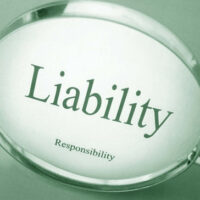Understanding the Concurring Cause Doctrine

To win your negligence lawsuit, you must prove that your injury was actually caused by the defendant’s negligence. The injury must be the foreseeable consequence of the defendant’s conduct and something that wouldn’t have happened but for that conduct.
However, the defendant’s negligence doesn’t have to be the only cause of your injury (even if it is the legal cause). Under the doctrine of concurring cause, Florida law recognizes that there can be more than one negligent actor and that negligence can exacerbate an underlying condition.
What is a Concurring Cause?
According to Florida’s standard jury instructions, negligence “may be a legal cause” of loss, injury or damage, “even though it operates in combination with” the act of another, a natural cause or “some other cause if such other cause occurs at the same time as the negligence and if the negligence contributes substantially to producing” the loss, injury or damage.
For example, imagine that you are rear-ended while stopped at a redlight. The car that hits you was traveling at a high speed and the force of the impact injures your back. But the injury is worse than it otherwise might have been because you have an underlying back condition. The negligent driver is still liable for your injuries, even though you already suffered from back problems. (Note that you must still prove that the accident caused your new injuries.)
Now imagine that you’re driving in the middle lane on the interstate with a car traveling on either side of you. Both cars attempt to move into the middle lane, not realizing that you’re already there. The car moving from the left lane hits you just as the car moving from the right lane strikes you, too. In this situation there were two concurring negligent causes, and both drivers are liable for your injuries. Neither negligent driver can claim that the other was an intervening cause that broke the chain of causation.
How Is a Concurring Cause Different from an Intervening Cause?
An independent intervening cause is something that breaks the chain of causation. It’s an act or event by someone other than the defendant that happens after the negligent act. It must be truly independent and not something set in motion by the defendant’s negligence. In other words, it can’t be a foreseeable consequence of the original act.
While both an intervening cause and a concurring cause involve multiple events, negligent actors, and/or injuries, the original negligent actor is not responsible for damage caused by the intervening event.
Intervening and concurring causes often present complex fact patterns. An experienced attorney can examine the facts of your case and help guide you through the litigation process.
Contact Us Today
Contact a Tampa personal injury attorney at The Pendas Law Firm today for a free consultation if you were injured by someone’s negligence. We will help prove that the negligent act caused your injury and help recover the compensation that you deserve.
The Pendas Law Firm also represents clients in the Fort Lauderdale, Orlando, Fort Myers, West Palm Beach, Jacksonville, Miami, Daytona Beach and Bradenton areas.
Resource:
floridasupremecourt.org/civ_jury_instructions/formerInstructions.shtml#causation






